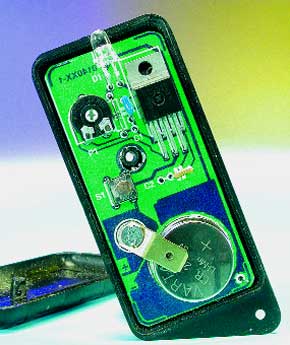Article
Lithium Torch

This mini pocket torch combines the advantages of Lithium button cells with a super-bright white LED. The lithium cells are small, have a long shelf life and have very little self-discharge. The LED has very high efficiency, an extremely long life expectancy and a modest current consumption (20 mA). In combination this results in an exceptionally long-life pocket torch.It is unfortunate that a Lithium cell has a voltage of only 3 V, while a super-LED has a forward voltage of 3.5 V. One cell will not suffice and we therefore will have to connect two in series.
Materials
Gerber file
CAM/CAD data for the PCB referred to in this article is available as a Gerber file. Elektor GREEN and GOLD members can exclusively download these files for free as part of their membership. Gerber files allow a PCB to be produced on an appropriate device available locally, or through an online PCB manufacturing service.
Elektor recommends the Elektor PCB Service service from its business partner Eurocircuits or AISLER as the best services for its own prototypes and volume production.
The use of our Gerber files is provided under a modified Creative Commons license. Creative Commons offers authors, scientists, educators and other creatives the freedom to handle their copyright in a more free way without losing their ownership.
PCB
Component list
Resistors:
P1 = 2k?5 preset
Capacitors:
C1 = 47nF
C2 = 22nF
Semiconductors:
D1 = super HR LED, white
IC1 = BTS629
(Conrad Electronics # 1759 86)
Miscellaneous:
S1 = pushbutton (e.g., Farnell # MCDTS-5M)
BT1 = 2 off CR2025 or CR2032
Case: KM type Box UM14 (Nedis)
P1 = 2k?5 preset
Capacitors:
C1 = 47nF
C2 = 22nF
Semiconductors:
D1 = super HR LED, white
IC1 = BTS629
(Conrad Electronics # 1759 86)
Miscellaneous:
S1 = pushbutton (e.g., Farnell # MCDTS-5M)
BT1 = 2 off CR2025 or CR2032
Case: KM type Box UM14 (Nedis)


Discussion (0 comments)